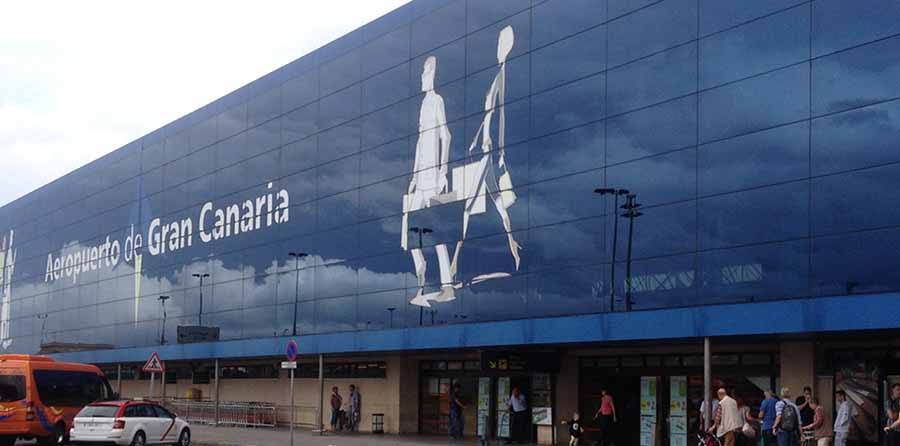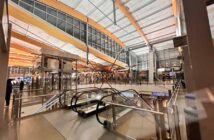
Gran Canaria Airport, also known as Las Palmas Airport or Gando Airport, serves as the primary gateway to the Canary Islands, located 19 kilometres south of Las Palmas and 25 kilometres from the popular tourist resorts of Maspalomas. Handling over 13 million passengers annually, it ranks as the busiest airport in the Canary Islands and the fifth busiest in Spain, connecting to 127 destinations across Europe, West Africa, Madeira, and the Azores. Operated by Aena, this modern hub, home to airlines like Binter Canarias, Canaryfly, Ryanair, and Vueling, offers a welcoming and efficient experience for travellers exploring the island’s diverse landscapes and sunny shores.
The passenger experience at Gran Canaria Airport is designed for ease and comfort. The single terminal, split into four zones (A for inter-island flights, B and C for Schengen and Spanish domestic flights, and D for non-Schengen international routes), ensures straightforward navigation. Arrivals typically involve a short walk from the tarmac or a quick bus transfer, with clear signage guiding passengers to baggage claim or exits. With 110 check-in desks across two floors and self-service kiosks, check-in is generally smooth, though some travellers report slow loading times of 10–15 seconds on kiosks.
Security screening, equipped with advanced scanners, requires liquids in 100ml containers and electronics in separate trays, with fast-track lanes available for €4 via the Aena app. Staff are courteous, and a free assistance service for passengers with reduced mobility, bookable 48 hours in advance, ensures accessibility. The airport’s cleanliness and efficient flow are often praised, though some note crowded lines during peak times.
Accessing the airport is convenient, with multiple transport options connecting to Las Palmas and southern resorts. The GC-1 motorway, running past the airport, provides quick access, with a 20–25-minute drive to the city centre. Bus services, operated by Global, include Route 60 to Las Palmas (€2.30, 30 minutes), Route 5 to Maspalomas (€6.80, 45 minutes), and Routes 66, 90, and 91 to other resorts, with departures every 20–30 minutes from Floor 1 of departures.
Taxis, stationed at Floor 0, cost €35–€40 to Las Palmas and offer fixed fares when pre-booked through services like Welcome Pickups. Car hire desks, including Europcar and Hertz, are located in arrivals, and a 1,438-slot parking garage with 24-hour surveillance is a short walk from the terminal. Public transport runs frequently from 5:20 am. to 11:30 pm with some overnight services, but travellers arriving late may rely on taxis due to reduced bus schedules. Traffic on the GC-1 during peak hours can slow journeys, so an extra hour is advisable.
The airport’s layout is functional, with three levels (ground for arrivals, first and second for departures) and two 3,100-metre parallel runways supporting large aircraft like the Airbus A350. The terminal’s four zones streamline passenger flow, with 14 air-bridges and 66 aircraft parking stands. Digital monitors provide real-time flight updates, though the lack of tannoy announcements means passengers must check boards regularly. Recent upgrades, including expanded check-in areas and a palm grove of 3,500 trees, enhance the environment, but seating can feel limited during busy periods, particularly in summer.
Delays are uncommon, with an average additional arrival time of under three minutes, reflecting strong on-time performance. However, peak summer months (July–August) and weekends see heavy traffic, with over 150,000 passengers weekly, leading to potential security or check-in queues. Weather conditions, such as strong winds or fog, and occasional air traffic control issues can cause disruptions, with some flights delayed by 15–20 minutes. Travellers are advised to arrive two hours early for Schengen flights and three for non-Schengen to account for congestion.
Dining and retail options are plentiful. The departure lounge features cafes like Caffe di Fiore, fast-food outlets like Burger King, and restaurants like Dehesa de Santa Maria serving Spanish cuisine, open from 6 am. to 10 pm. A duty-free shop by World Duty Free and smaller stores offer souvenirs, clothing, and travel essentials, though prices may be higher than in resorts. Limited options for special diets are noted, so passengers may want to plan ahead. The Galdos VIP Lounge, accessible for €20 (cheaper than online rates), offers comfortable seating, snacks, Wi-Fi, and a terrace with ocean views, open 6 am. to 10 pm.
Facilities cater to diverse needs. Free Wi-Fi is available throughout, with paid premium options for faster access. ATMs, currency exchange, a chapel, and a children’s play area are provided, alongside medical services and a lost-and-found desk. The Fast Track service (€10.40) speeds up security, and water refill stations are scattered across the terminal. A conference hall supports business travellers, and e-Gates at border control expedite entry for EU passengers. Accessibility features include ramps, elevators, and assistance intercoms, though public transport accessibility may be limited for those with mobility needs.
For connections, the airport’s single-terminal setup simplifies transfers, with a minimum connection time of 35 minutes for inter-island flights and 90 minutes for international routes. As a hub for Binter Canarias and Ryanair, it offers frequent flights to Tenerife, Madrid, and Amsterdam, but self-transfers require clearing security and customs, so a two-hour buffer is recommended. Weather or peak-time congestion can affect tight connections, so checking flight status via the Aena app is advised.
Aer Lingus
Aer Lingus operates from the Main Terminal at Gran Canaria Airport for flights to Dublin. Check-in desks are typically in the Check-in Zone B or C (desks 201–250 range), but assignments vary. Check-in opens 2 hours before departure and closes 45 minutes before departure. Online check-in is available 30 hours to 2 hours prior.
Departures are usually from Gates B1–B20 in the Schengen area. Check airport departure boards for real-time gate assignments. Gran Canaria is a seasonal destination, so verify flight schedules and arrive 90 minutes before departure.
Ryanair
Ryanair operates from the main terminal, Zone A, with check-in desks typically in the check-in area (desks 1–15). Passengers should verify desk assignments on airport screens.
Departure Gates: Flights to Ireland (Dublin) typically depart from international gates (gates B1–B10 or C1–C10, non-Schengen area; dynamic, shown on screens ~30-45 minutes before departure). Specific gates are shown on departure boards.



